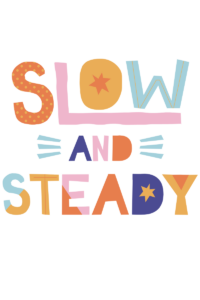What Is Clothesline Math?
Each month I try to write about a different classroom routine teachers should explore. Why? Routines help create a numeracy rich environment. It helps students share ideas, questions each other’s ideas, and take risks. But most importantly, routines are an efficient way to practice number sense.
Clothesline math is a routine that practices just that. The clothesline is an interactive and flexible number line. Benchmarks can be placed on any point. Number tents are what is placed on the clothesline. The number tents used can be adjusted by topic. This routine helps students learn how to manipulate a number line.
How Do You Set It Up?
To start off you will need a couple of materials. Luckily these materials are pretty cheap. You will need:
- A clothesline or rope of some sort
- Something to secure the clothesline. I’ve used thumbtacks and magnets as you’ll see in the picture below.
- Number tents. These are numbers or expressions written on folded paper to be placed on the number line (clothesline)
Optional: some people use clothespins to secure the number tents. I haven’t found this necessary in the classrooms I’ve worked in. They tend to just sit in place.
What Do The Students Do?
First, I strategically give students specific number tents. This is only at first so they could get accustomed to the routine.
Then I place benchmark numbers throughout the number line. Benchmarks can be placed anywhere.
Students then come up one at a time to place their number tent on the clothesline on where they think it might fit best.
At this point, students can justify their reasoning for placement or question each other. Students can even move other peoples tents if they found a mistake.

Extensions:
- Each individual student does not need a number tent. A pair or group could get a tent and to discuss it’s the placement.
- We can add MORE clotheslines! Yes, students can actually use double or even triple number lines. Students typically see multiple number lines in higher grade levels. Imagine how less intimidating it would be for them if they had a chance to play around with number lines like this earlier.https://clotheslinemath.com/
Here’s an example:

- During my trainings, I’ve suggested to teachers that this is primarily for a numeracy routine done with the whole class in order to prompt discourse. However, there is no reason why Clothesline Math can’t be used as a center with a small group.
So go ahead try the routine and share it with friends. Clothesline Math Book
In my free resource section you have access to:
- Clothesline Math +0 -0 +1 -1
- Clothesline Math Doubles-Halves
- Clothesline Math Number Recognition
- Clothesline Math Shapes
Want to check out more?
MEMBERSHIP SITE:
https://zennedmath.com/online-courses/
FACEBOOK GROUP: Zenned Math Teachers
https://www.facebook.com/groups/zennedmathteachers/
YOUTUBE CHANNEL: Zenned Math
https://www.youtube.com/channel/UC5njH_5LoK6G67BvZecGfnw?
WANT ME IN YOUR INBOX? Sign up for my newsletter
https://view.flodesk.com/pages/5efc876dcaabca0028b95eb5
DISCLAIMER: Some links included in this blog might be affiliate links. If you purchase a product or service with the links that I provide, I may receive a small commission. There is no additional charge to you!

